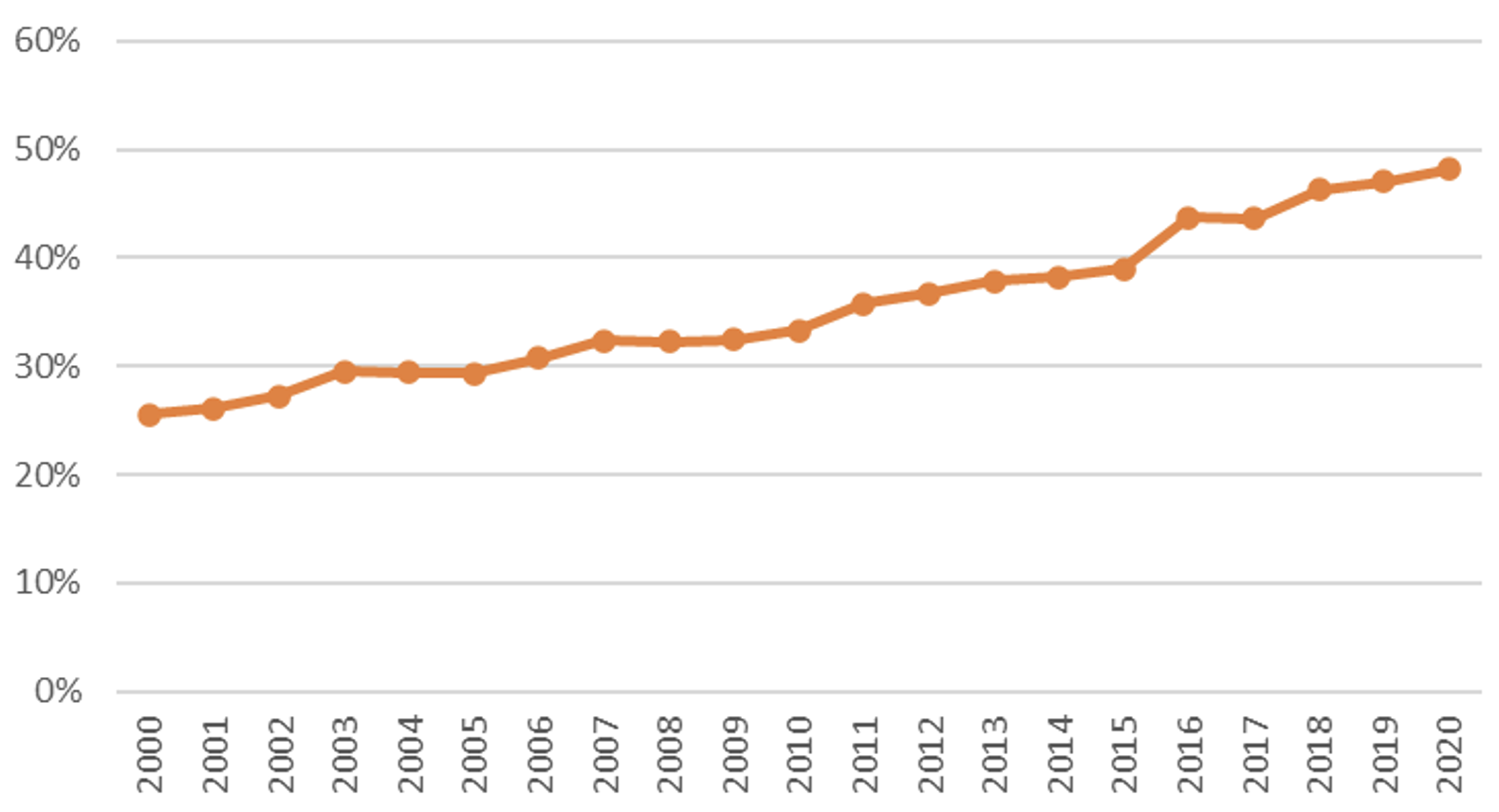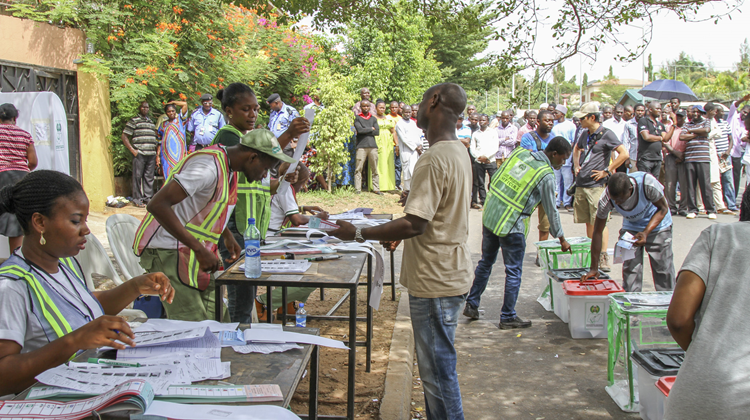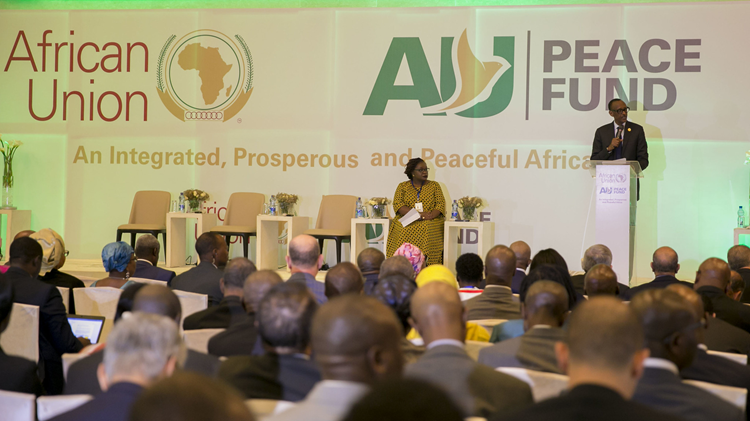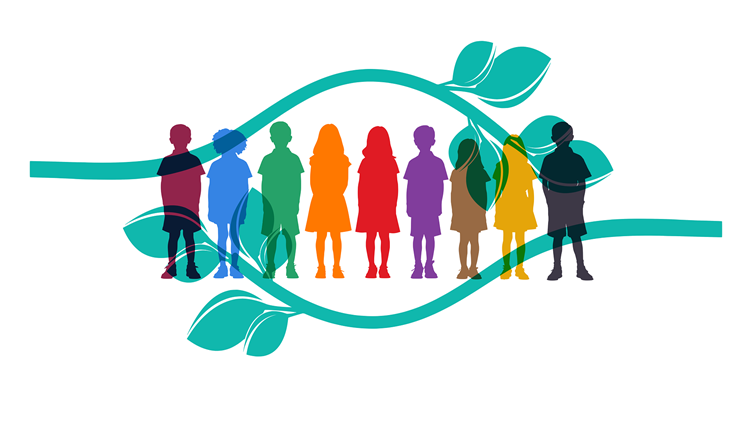Ensuring a sound springboard – and landing – for Africa’s leap ahead

Leapfrogging could be the jump forward that Africa needs for growth and development – but not on its own.
Leapfrogging offers a unique opportunity for Africa to bypass expensive investments in infrastructure associated with traditional development paradigms, particularly in digital technology and renewable energy.
But for the leap to be successful, the continent needs to build the requisite social and physical infrastructure and strengthen its political institutions. Only then would it contribute effectively to growth and development.
In a 2000 publication by The Economist, Africa was portrayed as ‘The Hopeless Continent’ marred by poverty, inequality and deprivation. A decade later, the narrative shifted, and the phrase was updated to ‘Africa Rising’ to capture the incremental progress the continent had made across various development indices. For example, life expectancy increased from 26.4 years in 1925 to 61 in 2021.
While we can acknowledge Africa’s economic transformation, the work is far from finished. And more recently, the myriad global economic and political shocks – COVID-19, the Russia-Ukraine war, the climate crisis and the wavering economic fundamentals in developed markets such as Britain – threatens to upend several decades of progress. In light of these developments, it’s clear that the continent cannot go back to business as usual.
Leapfrogging should be viewed as a tiny piece of a much bigger developmental puzzle
Several contemporary economic development theories consider technology and innovation as critical drivers of growth and productivity. This is because they foster the creation of new industries and jobs, and improve the capabilities of existing ones.
The term ‘leapfrogging’ has become the buzzword of the developing world. The concept refers to taking advantage of new technology or skipping traditional stages of development to create new and more effective systems. Leapfrogging can occur across different sectors, including infrastructure, energy, healthcare, agriculture and education. Leapfrogging can be incredibly beneficial for developing countries as it enables them to catch up quickly with more advanced countries while avoiding expensive and inefficient legacy systems.
Xi Jinping’s China is a perfect illustration of a country that has taken a massive leap across many areas of development over the past few decades. The East Asian country has radically transformed its economy by strengthening its technological and manufacturing base, thus bypassing the intermediate stages of development. For context, in 1990, China produced less than 3% of global manufacturing output, according to The Economist. Today, the moniker ‘Made in China’ is a global phenomenon as the country is responsible for nearly 30% of global manufacturing output.
Even in terms of infrastructure development, China is known for its multimodal transportation infrastructure, which it continues to expand aggressively. China has recently invested substantial amounts in the green energy value chain. The massive investment in the sector has solidified its position as a superpower in the renewable energy industry and lowered its reliance on fossil fuels. While China’s experience is not without its drawbacks, it does offer a glimpse of the benefits countries gain when they leapfrog with technology.
No technology will be able to mask Africa’s systemic issues
Two key industries – renewable energy and digital technology – can spearhead inclusive and sustainable growth and development across Africa.
The continent’s energy sector is a paradox. Regardless of the long coastlines, windy highlands and sunny deserts, which are all low-carbon and low-cost energy sources, most of Africa still lingers in the dark. Likewise, the key raw materials for batteries, such as cobalt, nickel and lithium, are littered across African countries, yet to be fully exploited and beneficiated.
According to the International Energy Agency, over 600 million Africans – 43% of the population – don’t have access to electricity. And even when they do, it is unreliable, intermittent and unaffordable. For instance, the average price of electricity is about $0.14 per kilowatt hour (kWh), which is twice the cost of that in East Asia ($0.07). This value skyrockets to almost $0.20 when you include the exorbitant costs of running a backup generator fuelled by petrol or diesel.
Chart 1: Access to electricity in Sub-Saharan Africa
 Source: The World Bank
Source: The World Bank
Africa has a unique opportunity to fuel its future by betting on renewable energies. For the continent, leapfrogging energy access means that electricity generation is obtained from modern renewables, skipping the intermediary stage of investing in electricity infrastructure based on fossil fuels. This dream is not far-fetched. The continent is home to 60% of the best solar resources globally, yet only 1% of installed solar PV capacity. In terms of affordability, solar is now cheaper than ever before, with prices falling dramatically over the years.
The prospects of renewable energy are quite promising. It can help businesses thrive, enable children to do homework without a flickering candle and help midwives safely deliver babies without worrying about the power going off. Beyond these immediate benefits, it will also reduce the continent's carbon footprint and keep countries on track to meeting ambitious climate targets.
But the cost of leapfrogging can be prohibitive.
Leapfrogging in the energy sector requires a hefty sum, and unfortunately the continent’s coffers are not buoyant. Just last December, Ghana reached an agreement with the International Monetary Fund on a $3 billion bailout loan to revive its ailing economy. Across other African countries, low tax revenues, high-interest loans and increasing debt servicing costs are threatening fiscal stability.
In terms of affordability, solar is now cheaper than ever before
But all hope is not lost, and the continent needs a strategy for innovative financing schemes to access the requisite funds. Foreign investors and multilateral organisations are already lending their support. Recently, Zambia signed a $2 billion agreement with the United Arab Emirates to build solar plants that will increase its generation base by more than half. The World Bank has also kicked off its $331 million Regional Emergency Solar Power Intervention Project in Freetown to increase electricity access to millions of people in West Africa.
When the continent tackles its energy woes by leveraging renewable sources, other sectors can thrive, especially digital technology.
In 1986, Miko Rwayitare, a Rwandan-born billionaire, was rumoured to have made the first cellular phone call on the continent. Often referred to as the ‘Father of mobile telecommunications in Africa’, the late Rwayitare launched his own mobile company, Telecel, which grew to become one of the largest telecommunications companies on the continent.
Almost 40 years after Rwayitare’s call was initiated, there are over 650 million mobile users in Africa, surpassing the figures in the United States or Europe. In fact, based on reports by the World Bank and the African Development Bank, more people in Africa have access to a cellphone than to piped water, a bank account or electricity.
Digital technology offers Africa a clear trajectory to accelerate development. The ubiquity of mobile phones and the increasing rate of internet penetration, particularly in rural areas, has created a more conducive landscape for technology-driven solutions across major industries. Not only does mobile and internet technology rapidly expand communication and information, it also encourages new innovations to sprout.
The spread of mobile money is an often-cited example. Kenya’s M-PESA, birthed by Safaricom in early 2007, is perhaps one of the most successful stories of a mobile money transfer service in Africa. Today M-PESA has a presence in over seven countries and has over 51 million active users. The impact of M-PESA in Kenya has been quite profound, not just for the East African country, but in spreading the financial inclusion gospel to the entire region.
Africa has a unique opportunity to fuel its future by betting on renewable energies
Outside financial services, technology can help bridge significant gaps in the real economy and improve the lives and livelihoods of millions of people. Some examples are Rwanda’s Zipline, which is improving the healthcare supply chain; Nigeria’s uLesson, which is working to enhance learning outcomes in education; and Kenya’s FarmDrive, which connects smallholder farmers with credit.
Ultimately, leapfrogging is a story of disruptive innovation and rapid development – and when it’s done right, it can have a transformative effect on nations.
For Africa’s quickly growing population, which is expected to reach 2.5 billion by 2050, it is a game changer and a harbinger of hope. The transition towards renewable energy sources and the rapid penetration of digital technology has the potential to deliver growth and development in an unprecedented way.
However, while leapfrogging is a necessary condition, it is also insufficient on its own. To avoid a staggering leap that ends in a disastrous fall, several conditions must be met.
First, digital technology is no substitute for good governance and quality institutions. According to the Ibrahim Index of African Governance, despite showing progress over the past decade, Africa’s overall governance score has stalled since 2019. In many countries, social contracts have been broken, democracies are fragile, and citizen dissatisfaction is at an all-time high. Second, infrastructure, both physical and social, is still largely inadequate.
No technology will be able to mask these systemic issues. Perhaps the best way to think about leapfrogging is by looking at the ‘Jobs to Be Done’ – a concept popularised by the late Clayton Christensen – identifying the development gaps in countries and then figuring out how technology and innovation can help solve them.
There’s no doubt that leapfrogging presents an opportunity for the continent to conquer its historical developmental challenges and catch up with the rest of the world, despite being involuntarily ‘late to the party’. However, it should be viewed as a tiny piece of a much bigger developmental puzzle.
Image: WorldBank/Flickr






